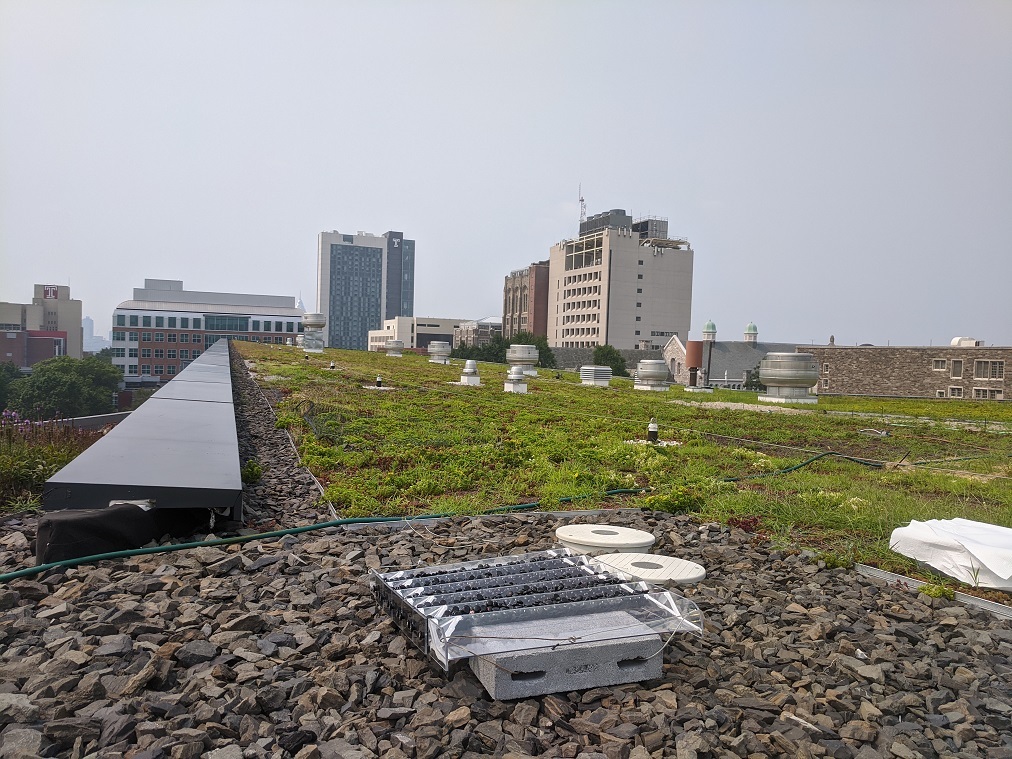Visitors to Geological Society of America 2023 poster session 28-49 saw first hand the collaborative nature of the Critical Zone Collaborative Network.
Posted: January 5, 2026

Dust Variation Along An Urban Gradient in Philadelphia was presented by Temple University student Emilie Tannert-Schmidt during the March 2023 Northeast-Southeast meeting of the Geological Society of America. Tannert-Schmidt investigated "the grain size distribution, mass flux, mineralogy, and geochemistry of atmospheric dust" in various places throughout Philly.
This work is part of the Critical Zone Collaborative Network's Urban Cluster projects and the Urban Cluster's Laura Toran, also based at Temple University, advised Tannert-Schmidt in the work and joins Tannert-Schmidt and another undergrad as co-authors on the paper presented at GSA.
Data presented in the paper came from samples gathered by a passive dust collector installed on the roof of a building.

Toran posted this image of the collector in its rooftop location on her blog.
The design for this passive collector was sketched up by Dust^2 Cluster's Jeff Munroe more than a decade ago as part of his ongoing, long-term research in the Southwest United States.
Munroe, based at Middlebury College, worked with the fabrication team at Middlebury to create the first prototype and now has more that two dozen of these collectors throughout high altitude research sites in the Uinta Mountains.

When Toran was looking for a passive dust collector, Munroe quickly shared not only the collector, but the design as well keeping in mind that the more the piece of equipment is used the more refined and efficient it will become.
The collector is very straightforward. It sits in the place it's set up, a corrugated surface holds a collection of glass marbles. Dust falls into the collector, slips past the marbles, gathers on the marbles, gathers in the bottom of the sections of the collector, and then the marbles are removed from their sections, rinsed with water which collects the dust, then the water is eventually removed and the dust is sent to a lab for analysis.
More about the collector and early work with the equipment in this 2014 paper (not open source).
Over a decade of science has been supported by these passive dust collectors.
Collaboration is at the core of the CZCN's work, and one of the reasons the National Science Foundation funded the 5-year project. To find ways, small and large, that researchers could work together. What starts as 'I've got equipment that may work for you' quickly leads to a tool providing data for a rising environmental scientist to include in their poster session.

 Dust^2
Dust^2